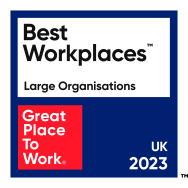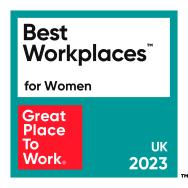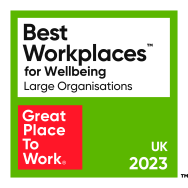Housing associations: is your hybrid working infrastructure set-up correctly?
We explore why it’s important to revisit your hybrid working infrastructure following the pandemic to ensure your approach is fully optimised to improve the end-user experience, sustainability, compliance, and costs.
Hybrid working has soared in popularity over the last 18-months due to the Covid-19 pandemic and the government mandated ‘work from home’ strategy. Initially, this resulted in many public sector organisations, including housing associations rapidly deploying hybrid working IT infrastructure to ensure that they can continue to serve those most in need of their services and support their staff and volunteers to work remotely.
However, since the initial infrastructure was rapidly put in place as an emergency response at the very start of the pandemic in March 2020, many have not revisited their infrastructure to ensure that the solutions implemented are the best fit for their organisation and long-term business goals. This means that some housing organisations do not have the right infrastructure in place, which could be costing them time and money and slowing progression towards achieving their goals.
With the more recent return to the UK government’s work from home guidance and the benefits associated with the flexibility of choosing your workplace, it’s clear that hybrid working will remain a staple in all organisations’ working environments. In fact, a recent survey of the housing sector has revealed that almost every (99%) housing association is planning to move to a hybrid working approach post-pandemic, so it’s important to ensure that you have the right infrastructure in place.
What considerations should be included in your hybrid working strategy?
A successful hybrid workplace strategy will not only consider the implementation of the infrastructure, it will also cover management and evolution of the approach to ensure user satisfaction and maximum benefits for the organisation.
Housing associations must collect data about how its end-users utilise and engage with the solutions available, future-proof their approach, provide training on using the tools available, and ensure that the approach is compliant with industry regulations.
Does your hybrid working infrastructure allow you to:
- Monitor end-user engagement, experience, and adoption of the tools
- Confidently manage remote end-point devices
- Quickly and successfully monitor and remediate cyber security issues
- Improve security, compliance, adoption and change management, and user experience?
If you answered ‘no’ to any of these questions your infrastructure needs optimising. Take our short assessment now to find out where improvements can be made.
The benefits of investing in a fully optimised hybrid working infrastructure for housing associations
Spending time now improving the infrastructure you have in place will future-proof your organisation against future challenges and ensure that you are getting the most out of the solutions you already have in place.
The benefits of fully optimised hybrid working infrastructures include:
Cost reduction
Hybrid and remote working infrastructures reduce your organisation’s overheads with less need to support and power an office space. Allowing your employees to work from home and your end-users to access your services remotely means that they only travel into your main base sporadically, lowering other operational costs such as recruitment, training, and absence. You are better equipped to support relocations, missed appointments, and diverse needs with solutions that support collaborative remote access.
Stronger recruitment
Hybrid workplaces are empowered to recruit and hire talented candidates from broader geographical locations than just the surrounding areas close to their main office. This means that you have access to a wider talent pool of desirable candidates and can become more selective in your hiring process to ensure that you have found the right person for the job. This not only lessens the initial upfront cost of recruitment, but it also reduces the future costs of re-hiring for the same position because of contract termination, investing in training for short-term employees, and having to part ways with successful team members because of relocation or flexibility restrictions.
This also benefits your service users as it means that you can hire locally to improve connectivity between your workforce and the people you are helping.
Improved sustainability
As well as the reduction in your organisation’s carbon footprint from less work-related travel, hybrid infrastructures often accelerate cloud migration, which contributes to your overall sustainability strategy. Microsoft Azure is up to 98% more carbon efficient and up to 93% more energy efficient than on-premise databases, making cloud computing the most sustainable option.
Increased employee and user engagement
Organisations deploying a hybrid infrastructure are able to become more inclusive of their workforce and end-user’s different support needs and personal lives, improving engagement with your services.
Virtual desktop solutions that support hybrid infrastructures give your users the flexibility to access your systems from anywhere, on any device, at any time. This helps to remove barriers when it comes to accessing and enabling technology, ensuring that the people who need your services the most can reach it when they need it.
Tighter cyber security measures
Virtual desktop infrastructures can be managed and maintained remotely, giving your IT teams the ability to deploy security updates at mass to end-point devices and respond quickly to cyber security breaches or attempted attacks remotely.
Are you getting the most out of your association’s hybrid working infrastructure?
Take our short assessment to discover if your hybrid IT set-up is empowering your organisation to reach its goals and maximise the benefits of hybrid working.







